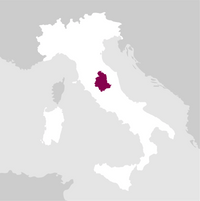Description
The Bramìto della Sala is produced from the vineyards surrounding the medieval castle at Castello della Sala. One variety that thrives in this terroir is Chardonnay. The vineyards are on soils rich in fossil deposits with veins of clay that give the wine minerality and elegance. Bramìto della Sala’s first vintage was in 1994.
Details

Perfume

Color

Taste
Serve at:
08 - 10 °C.
Longevity:
03 - 05 years

Pairings
- Start up year: 1940
- Oenologist: Massimiliano Pasquini
- Bottles produced: 866.586
- Hectares: 229
The estate’s 229 hectares (566 acres) of vineyards are located at an altitude of 220 - 470 meters above sea level (722-1542 feet) and are planted with traditional varieties such as Procanico and Grechetto but also with Chardonnay, Sauvignon Blanc, Sèmillon, Pinot Blanc, Viognier and a small quantity of Traminer and Riesling.
The region is exceptional for producing white varieties with one exception, Pinot Noir, that has found ideal conditions in this terroir to best express its full potential. The vines grow in clay and calcareous based soils, rich in fossil shells, and they are well exposed to the rising of the sun with an excellent difference of temperature between day and night. Read more


| Name | Castello della Sala Bramito della Sala Chardonnay 2024 |
|---|---|
| Type | White still |
| Denomination | Umbria IGT |
| Vintage | 2024 |
| Size | 0,75 l |
| Alcohol content | 12.5% by volume |
| Grape varieties | 100% Chardonnay |
| Country | Italy |
| Region | Umbria |
| Vendor | Castello della Sala (Antinori) |
| Origin | Village of La Sala, Town of Ficulle (Terni). |
| Fermentation temperature | 16 8 °C (61-64 °F) |
| Wine making | Grapes are destemmed and softly crushed once they arrive at the winery. The must with its skins is cooled to 10°C and transferred to stainless steel tanks for a short maceration of about 2 to 4 hours to extract and enhance the aromatic and taste profile of the grapes. The batches are transferred partly into wood and partly into stainless steel vats where alcoholic fermentation takes place at a controlled temperature of 16 8°C. Only the portion in wood then undergoes malolactic fermentation. |
| Aging | The wine is then blended and bottled. |
| Allergens | Contains sulphites |




